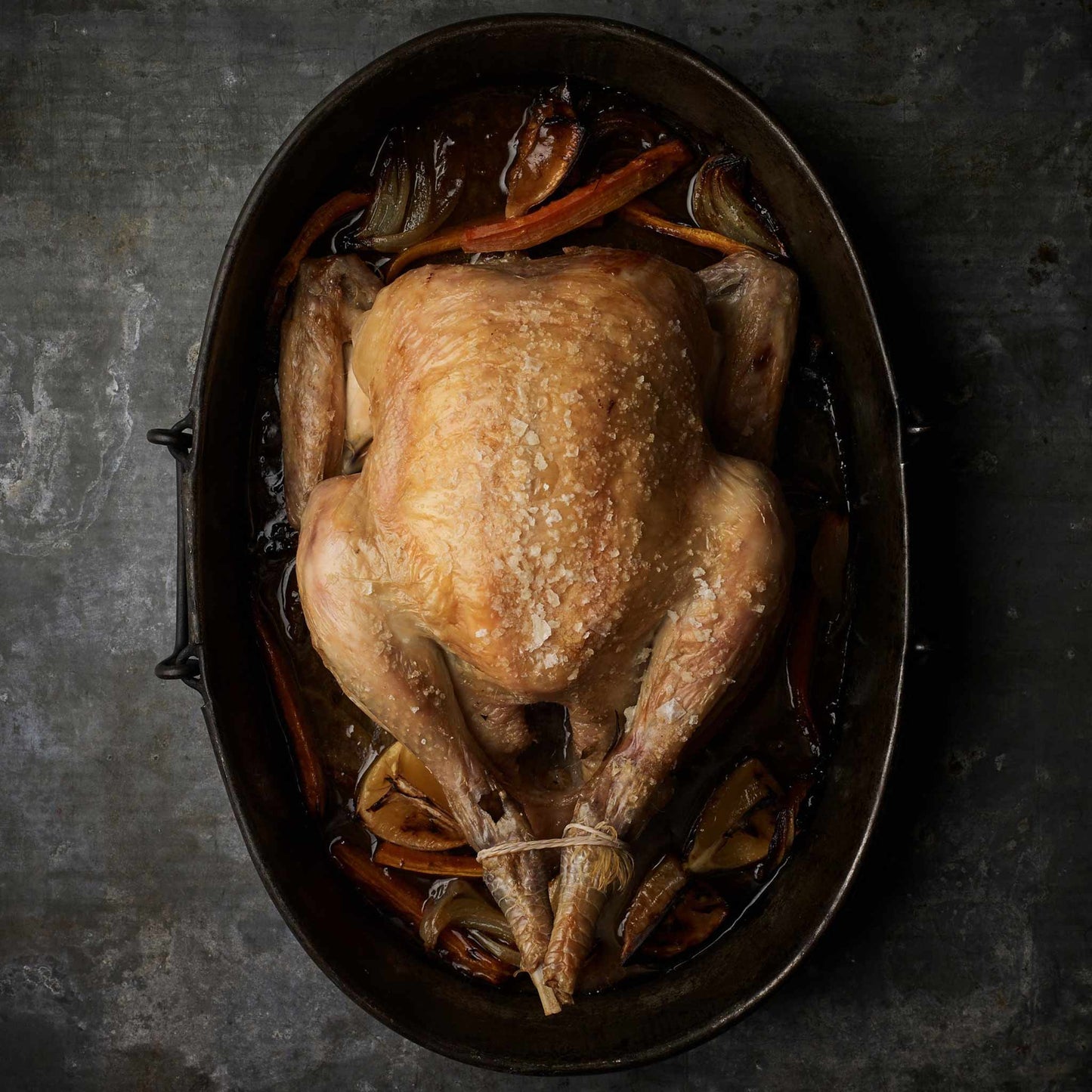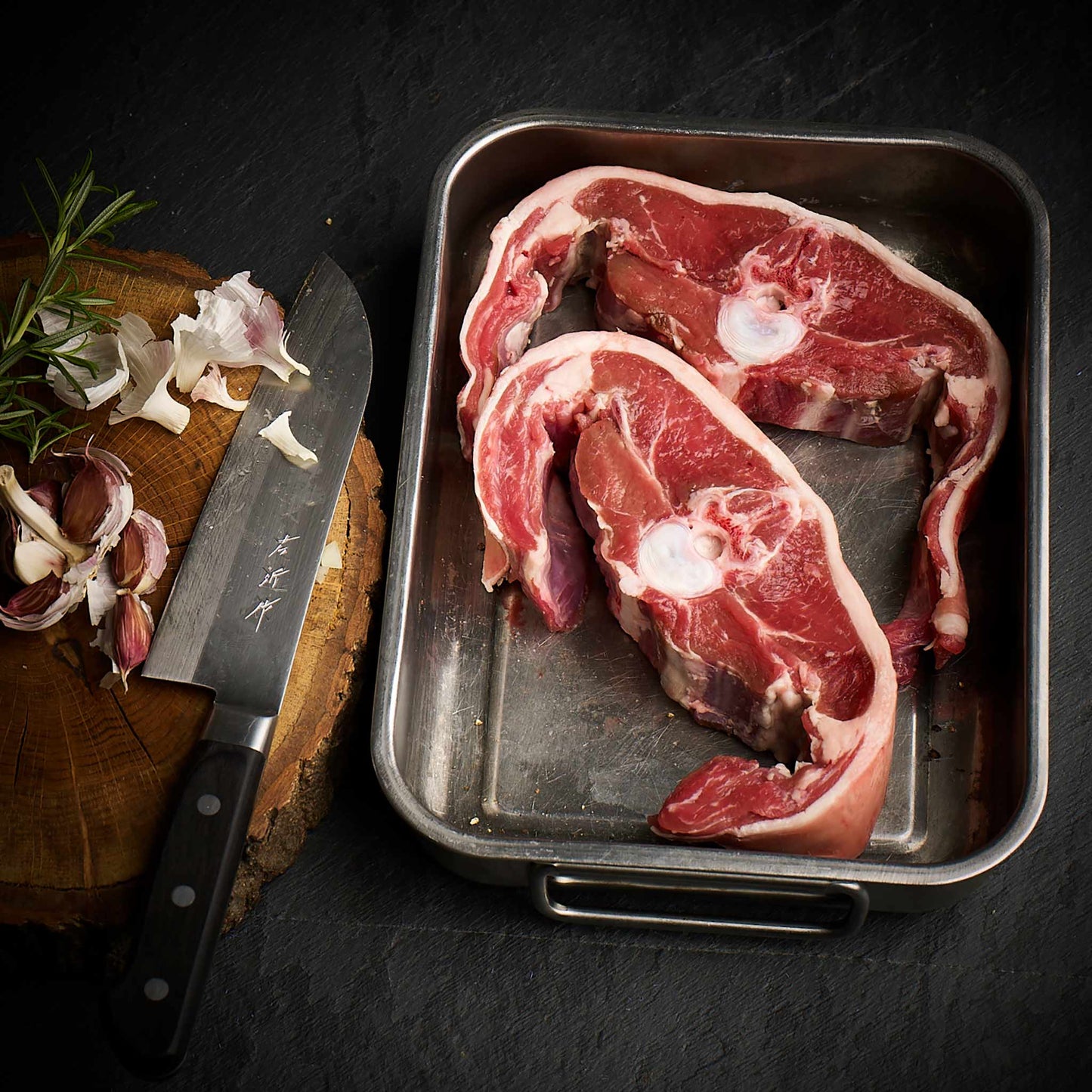We source our chicken from one farm in Leicestershire. The farm is Pasture for Life certified and rears truly free range, outdoor birds.

What is the Celtic Tree Calendar?
In simple terms the Celtic Tree Calendar is the representation of the changing year referencing trees instead of months - the changing of the trees being linked to the lunar cycle of 28 days. This means there are 13 trees in the year not the regular the Roman 12!
The tree calendar focusses our attention on the changing seasons through nature. The presumption is that this method is an ancient representation of marking the passage of time but the tree calendar is actually a relatively modern interpretation of something extremely ancient.
In 1946 Novelist and poet Robert Graves wrote his study on Celtic mythology ‘The White Goddess’ in 1946 and it was published 2 years later in 1948.
Graves borrowed the idea of the early-medieval Irish ogham alphabet, which was believed to be based on trees, and re-arranged it to suit his (newish) idea of a Celtic Tree Calendar naming 13 months after trees.
The ogham alphabet itself, which looks rather rune-like with branching lines (like trees) dates from the 5th and 6th centuries. It’s a form of lettering that’s nearly always found carved on monumental stones.
The last month in this cycle is the month of Elder.
The Elder is a pretty, deciduous tree of 15-39 ft in height that naturally transforms with every season. It's lush, green leaves unfurl in early spring, an abundance of large, scented white flowers blossom in summer and glossy black berries ripen every autumn. The Elder tree will happily grow in any garden or flower pot and it is wonderful for wildlife, especially the honey bees and garden birds.
What is the mythological significance of the Elder Tree?
Below taken from The Present Tree
In ancient mythology, the Elder tree is highly sacred with a spirit known as the Elder Mother, or ‘Hylde Moer’ in Danish, living inside the tree. This spirit guards every Elder tree and has the ability to protect and to harm. Legend has it that magical powers from the Elder Mother are gifted by her to parts of the tree and she transforms the tree’s natural gifts - flowers, berries and wood - into wonderful blessings! The leaves of the Elder tree protect a home or a person when dried and hung in a doorway or around the neck. It is a particularly good omen if an Elder grows near a dwelling, as the tree’s proximity to the home protects its inhabitants. In many ancient legends the Elder tree is magical and symbolises good health and prosperity.
Elder had negative Christian legends associated with it, to suppress earlier pagan beliefs. Many other trees and plants with pagan associations also suffered this fate. However, the elder was doubly cursed. Legend has it that it was the tree from which Judas Iscariot hanged himself. It was also one of several trees ‘accused’ of having supplied the wood for the Crucifixion Cross (aspen being another popular culprit). Given the small size of elder trees and how weak the wood is, neither of these accusations seem likely nor fair.
The Gaelic droman may have given rise to the word dromanach which is a specialised wooden peg used to secure thatch on roofs. These pegs were often made from elder wood. Despite its relative scarcity, the parts of the tree used for dying were important to the Harris tweed industry. Blue and purple dyes can be made from the berries, yellow and green from the leaves and grey and black from the bark.
Medicinal uses
Most famously, Elder has been treasured for its medicinal uses for thousands of years. It is believed to be a curative for more than 70 diseases, ranging from the plague to toothache! In medieval England it was said that summer had not arrived until the Elder was in full bloom and that it ended when the berries were ripe.
In spite of these negative beliefs, Elder has a wide range of medicinal uses. The medieval herbalist John Evelyn held it in high regard and called it “a kind of Catholicon against all infirmities whatever”. Washing a face in dew gathered from elderflowers was believed to enhance and preserve a woman’s youthful beauty. To this day derivatives of Elder continue to be an ingredient in skin cleansers and eye lotions.
It provides a wealth of remedies throughout the year as its yearly cycle completes:
Leaves
The leaves are some of the first to appear after winter and are used in ointments for bruising, sore muscles and chilblains. When applied topically, they appear to break down bruises and work as an anodyne or relaxant to relieve pain. They are not used internally, only externally due to their content of toxic cyanogenic glycosides.
Flowers
In the spring the Elder supplies us with its flowers, these are high in flavonoids (especially rutin and isoquercitrin) which are used for their anti-inflammatory and anti-allergy effects, specifically working on the upper respiratory tract and sinuses. elderflower soothes inflamed tissues in the sinuses and dries up secretions and excess mucus. This makes elderflower a great remedy for sinusitis, colds and allergies.
Elderflower combined with nettle is an excellent remedy for hay fever.
The infusion of flowers are also used as a febrifuge to bring down a fever.
Topically, an infusion or distilled water made from elderflower was used to make the skin fair and remove freckles and sun spots. It is a really effective face wash for reducing redness and evening out skin tone. It is said to lighten skin, so those with darker skin should use with caution.
Berries
In the autumn we are rewarded with the beautiful purple-black berries. These are high in flavonoids and anti-oxidants and also contain vitamin A and C. They work as a great anti-viral, helping protect the whole family form colds and flu in the winter months. They also act as an immune booster, keeping the immune system healthy and ready to fight off infection.

Spring Elderflower buds...
They can cause nausea in some people when raw so they are best used processed (such as cooking or tincturing) and removing the seeds.
It’s no coincidence that this plant offers us the actions we need most seasonally. Its nature’s way of keeping us healthy.
Harvesting
Leaves – Leaves appear in early spring and are best harvested in April before the flowers appear but can be harvested up until autumn. If using them to make an infused oil, pick the leaves on a dry and sunny day as excess moisture can turn the oil rancid.
Flowers - Do they smell of elderflower cordial? yes? Then they are probably elderflower. If not, they may be Rowan or some other flower. Harvest the flowers on a dry and sunny day (May-June) by clipping off the entire umbel. Pick them when they are in full bloom but before any begin to turn brown. Gather in a metal pot rather than a bag to preserve as much of the scented, yeast filled pollen as possible.
Berries – Pick in late summer, when ripe, juicy, soft to the touch and the whole cluster head is purple.
Processing
Leaves – allow the leaves to dry slightly before steeping in oil and roughly chop them or pound slightly to release the constituents from the cell walls. (External use only)
Flowers – Pick the flowers off of the stems (as the stems contain a toxic alkaloid which can cause stomach upsets) you can do this by hand or use the prongs of a fork. The flowers are easier to remove from the stalks when they are left to sit for a few hours before processing.
Berries – Remove from stalks in the same way as flowers. - a fork is your best friend here.
Preparations
Leaves – Made into infused oil and balms for muscle aches and bruising.
Flowers – Fresh or dried for tea, made into cordial, champagne, distilled for external use, tincture for hay-fever, colds, antiviral.
Berries - Can be made into jams, syrups, vinegars and tinctures for antiviral properties for cold & 'flu or a tasty spread!



